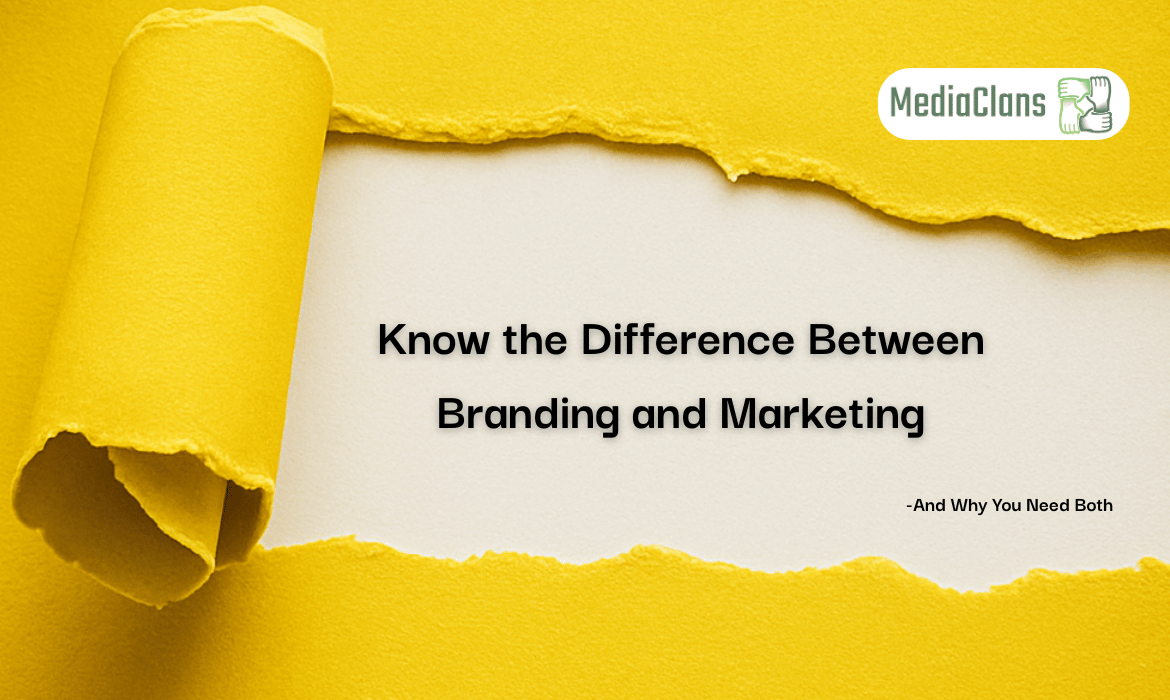In today’s highly competitive digital landscape, understanding the difference between branding and marketing is essential for any business aiming to grow. While these two terms are often used interchangeably, they serve distinct purposes. Simply put, branding defines your identity, and marketing promotes it.
By leveraging both effectively, businesses can increase visibility, build trust, and boost customer loyalty.
What Is Branding?
Branding is the process of defining the core identity of your business. It represents who you are, what values you stand for, and how your customers perceive you. Branding is not just a logo or color palette—it is the emotional and visual identity of your business.
Branding Helps You Define:
- Who you are as a business
- Your mission and vision
- The tone and voice of communication
- What differentiates you from competitors
- The promise you deliver to your customers
Key Elements of Branding:
- Brand name and logo
- Brand voice and messaging
- Color scheme and visual style
- Core values and mission statement
- Customer experience and perception
For example, Apple’s branding focuses on innovation, simplicity, and premium quality. These values are consistently reflected in its marketing efforts, which build on an already strong brand foundation.
What Is Marketing?
Marketing is the strategy and set of actions used to promote your brand and generate sales. It involves the tools, channels, and techniques you use to communicate your value to potential customers.
Marketing Helps You:
- Reach your target audience
- Generate leads and conversions
- Increase brand visibility
- Communicate offers and value propositions
- Build short- and long-term sales pipelines
Common Marketing Channels:
- Search Engine Optimization (SEO)
- Social Media Marketing
- Content Marketing (blogs, videos, etc.)
- Paid advertising (Google Ads, Meta Ads)
- Email marketing campaigns
- Influencer collaborations
Marketing is dynamic and performance-driven. It is continuously optimized based on metrics such as click-through rates, conversion rates, and return on investment.
Branding vs. Marketing: A Comparative Breakdown
| Aspect | Branding | Marketing |
| Core Purpose | Defines identity and values | Promotes product or service |
| Focus | Emotional connection | Strategic outreach and engagement |
| Duration | Long-term and consistent | Short- to medium-term |
| Outcome | Brand loyalty and recognition | Customer acquisition and sales |
| Tools Used | Messaging, design, storytelling | Ads, SEO, social media, email |
Why Branding and Marketing Work Best Together
A successful business doesn’t choose between branding vs marketing it uses both. Branding builds a strong foundation, while marketing brings traffic and conversions.
Here’s why you need both:
- Branding builds trust; marketing builds traffic
- Branding creates recognition; marketing creates action
- Branding encourages loyalty; marketing drives awareness
- Branding is about perception; marketing is about promotion
Without branding, your marketing lacks depth. Without marketing, your branding goes unnoticed.
Practical Example: Skincare Brand
Imagine you are launching a luxury skincare line:
- Your branding highlights organic ingredients, sustainability, and science-backed formulations.
- Your marketing strategy includes SEO blogs on skincare routines, Instagram ads, and influencer reviews.
Together, they build a consistent story and attract the right audience.
Final Thoughts
The difference between branding vs marketing is clear but their power comes when used together strategically. Branding defines your promise, and marketing delivers it to the world.
Investing in both helps you build a recognizable, trustworthy, and profitable business.
Grow Your Brand with Mediaclans
If you’re ready to develop a powerful brand identity and execute result-driven marketing campaigns, Mediaclans can help. We combine creative branding with data-backed digital marketing to help your business grow sustainably.
Contact Mediaclans today for expert support in building your brand and taking it to market with precision.


